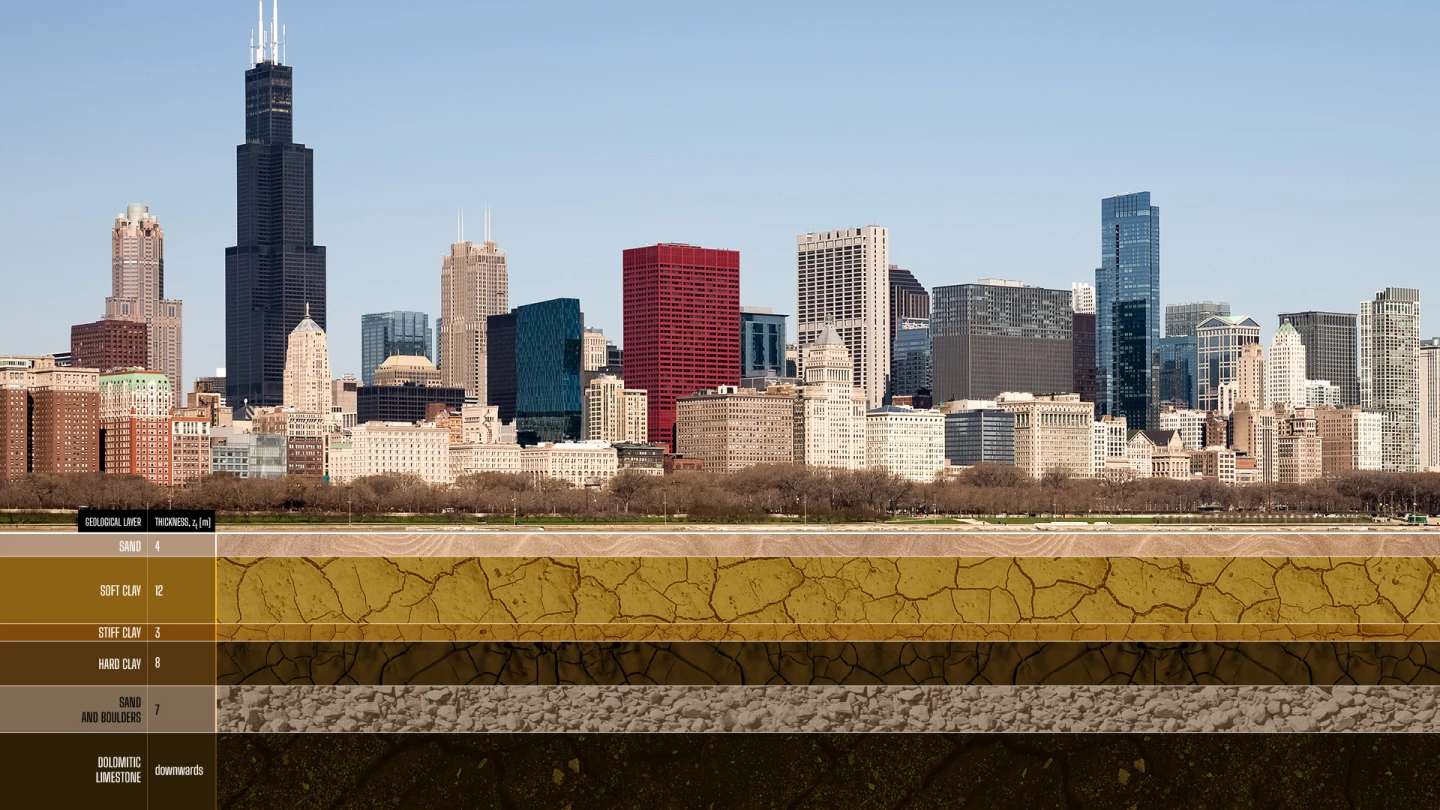As urban underground landscapes heat up, the swelling and contraction they're experiencing is putting stress on the buildings above that they weren't designed to handle. So says a new study that calls the effect a "silent hazard."
In cities, buildings made from concrete and steel can funnel the heat of the sun down through their foundations into the soil on which they stand. Combine that with underground parking and transportation with its tunnels and tubes of metal, and the temperatures beneath cities can be a lot hotter than those above.
In fact, in the current study carried out by researchers at Northwestern University, it was found that underground temperatures in Chicago's Loop – an area full of high-rises and other buildings – was 10 degrees higher than the temps beneath a nearby park. What's more, the air temperatures in underground structures were found to be up to 25 degrees hotter than those found in undeveloped ground. This data was gleaned after monitoring 150 wireless temperature sensors around Chicago for three years and then using computer modeling to extrapolate the results.
“If you think about basements, parking garages, tunnels and trains, all of these facilities continuously emit heat,” said Northwestern’s Alessandro Rotta Loria, who led the study. “In general, cities are warmer than rural areas because construction materials periodically trap heat derived from human activity and solar radiation and then release it into the atmosphere. That process has been studied for decades. Now, we are looking at its subsurface counterpart, which is mostly driven by anthropogenic activity.”
All of this extra heat building up beneath cities is known as underground climate change and its effects can be severe, say the researchers.
Because different soils respond differently to this heat, they can shift at different paces, warping the very ground, and the buildings that rest on it. In fact, the Northwestern study found that underground climate change can cause the ground to swell upwards by as much as 12 mm (about 0.4 in) in some areas, while it can get pushed downward under the weight of heavy buildings by up to 8 mm (about .3 in).
“Chicago clay can contract when heated, like many other fine-grained soils," said Rotta Loria. "As a result of temperature increases underground, many foundations downtown are undergoing unwanted settlement, slowly but continuously. In other words, you don’t need to live in Venice to live in a city that is sinking – even if the causes for such phenomena are completely different.”

Rotta Loria adds that the effects from all this moving urban earth won't be immediately catastrophic but he does call underground climate change a "silent hazard" that will slowly begin to crack foundations and put buildings under stresses that they can't handle. This is particularly true of older buildings built from stone and brick, such as those found in European cities. But even relatively modern buildings are at risk, say the researchers, because they weren't designed with underground climate change in mind.
“Based on our computer simulations, we have shown that ground deformations can be so severe that they lead to problems for the performance of civil infrastructure,” said Rotta Loria. “It’s not like a building will suddenly collapse. Things are sinking very slowly. The consequences for serviceability of structures and infrastructures can be very bad, but it takes a long time to see them. It’s very likely that underground climate change has already caused cracks and excessive foundation settlements that we didn’t associate with this phenomenon because we weren’t aware of it.”
Turning a problem into a solution
As one possible solution for the threat posed by underground climate change in urban areas, the researchers propose using all that subterranean warmth to help heat the buildings above by employing current geothermal heating techniques. They also say that new buildings should be designed with adequate heat-shielding insulation to prevent them from conveying more heat into the underground environment.
"What we don’t want is to use technologies to actively cool underground structures because that uses energy," says Rotta Loria. "Currently, there are a myriad of solutions that can be implemented.”
The research has been published in the journal Communications Engineering.
You can see more about the study in the following video.
Source: Northwestern University





